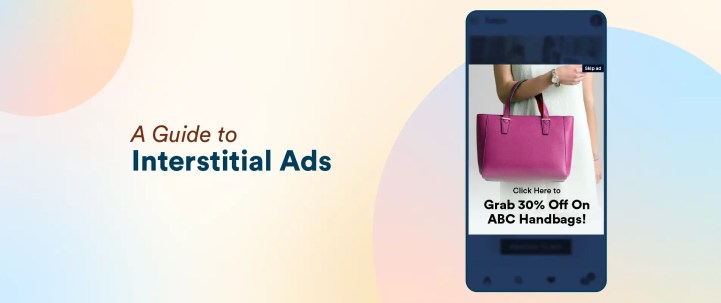Remember when pop-up ads seemed to be everywhere, interrupting your browsing at the worst moments? Digital advertising has come a long way since then. Interstitial ads now offer a more refined approach, appearing at logical breaks in apps, games, and websites to capture user attention without the chaos of old-school pop-ups.
For marketers, these interstitial ad formats can drive real results when used wisely. In this blog, you’ll learn what interstitial ads are, see practical examples, and get tips for using them to boost customer engagement and revenue.
What Are Interstitial Ads?
Interstitial ads are full-screen advertisements that appear at natural pauses or transition points within an app or website, such as between game levels, after completing an action, or while moving between content pages. These ads cover the entire screen, requiring the user to either engage with the ad or close it before returning to their activity.
Typical Placements For Interstitial Ads
These strategic placements ensure that interstitial ads appear at natural pause points in the user experience, maximizing visibility while minimizing disruption::
- Between Game Levels: Displayed after a user completes a level in a mobile game, providing a natural pause without disrupting gameplay.
- After Completing an Action: Shown when a user submits a form, finishes a video, or completes a transaction, making the ad feel less intrusive.
- During Content Transitions: Placed when users move from one article or page to another, such as between news stories or app screens.
- App Launch or Exit Points: Occasionally used when an app is opened or about to be closed, though this must be handled carefully to avoid frustrating users.
- Content Loading Screens: Shown while new content is loading, using the wait time to present an ad without breaking the user journey.
How Interstitial Ads Differ From Pop-Ups And Banner Ads
Interstitial ads demand full attention due to their size and placement. Let’s see how pop-up and banner ads look like.
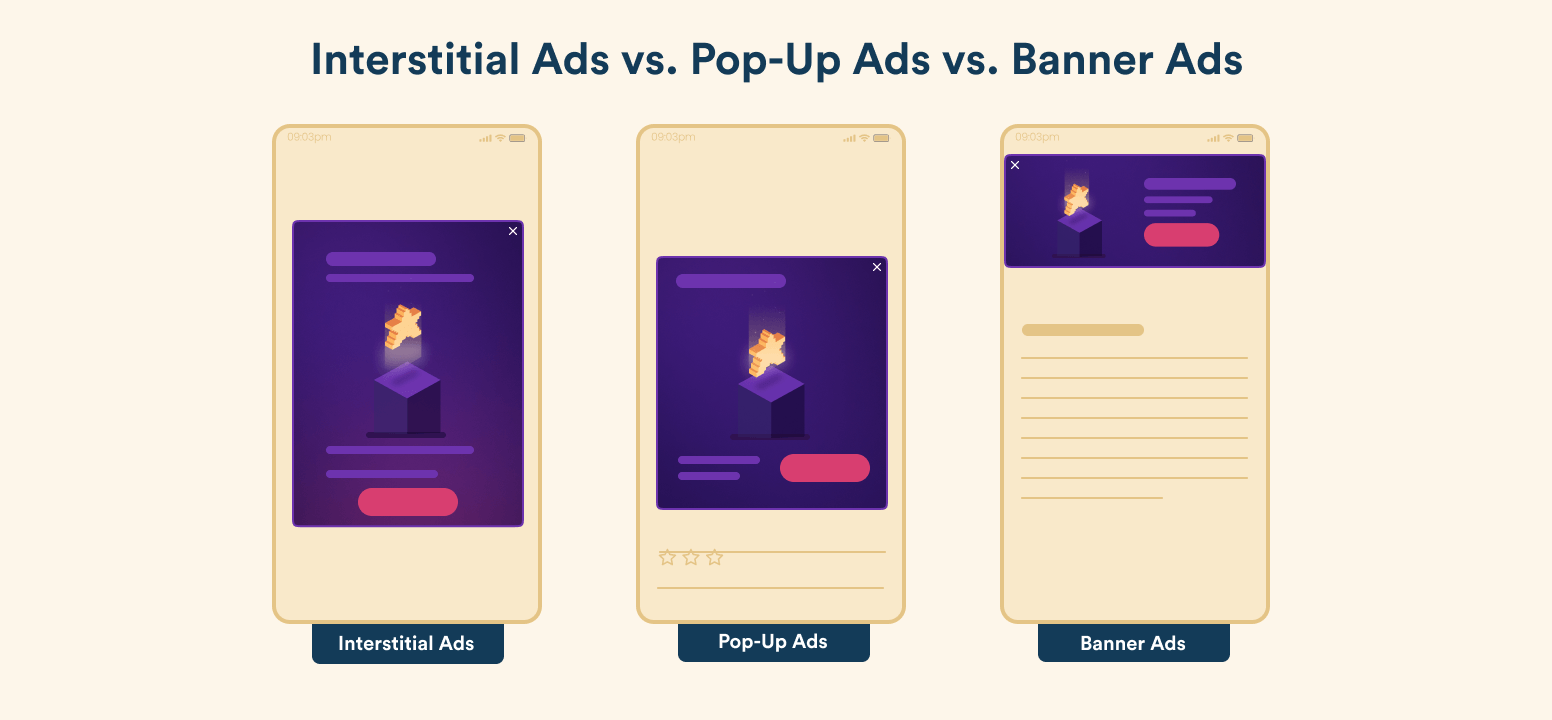
Pop-Up Ads
Pop-ups often appear unexpectedly, usually as smaller overlays that interrupt the user’s flow. They are triggered by actions like clicking or scrolling. They are frequently seen as disruptive since they interrupt users mid-task.
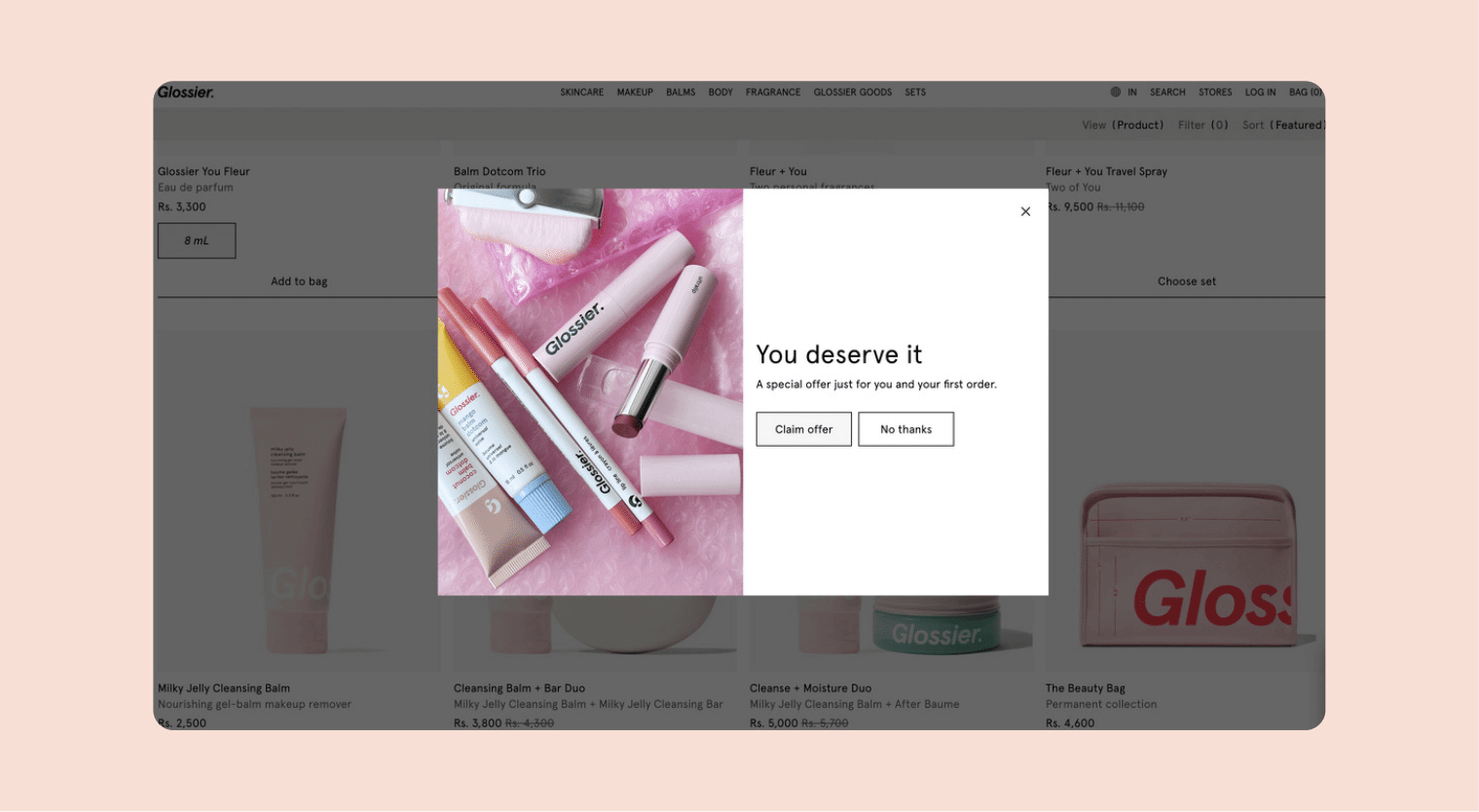
Source: Glossier.com
Banner Ads
Banner ads are small, rectangular placements at the top, bottom, or within content. They’re easy to overlook and don’t take over the entire screen, so they rarely disrupt the user experience.
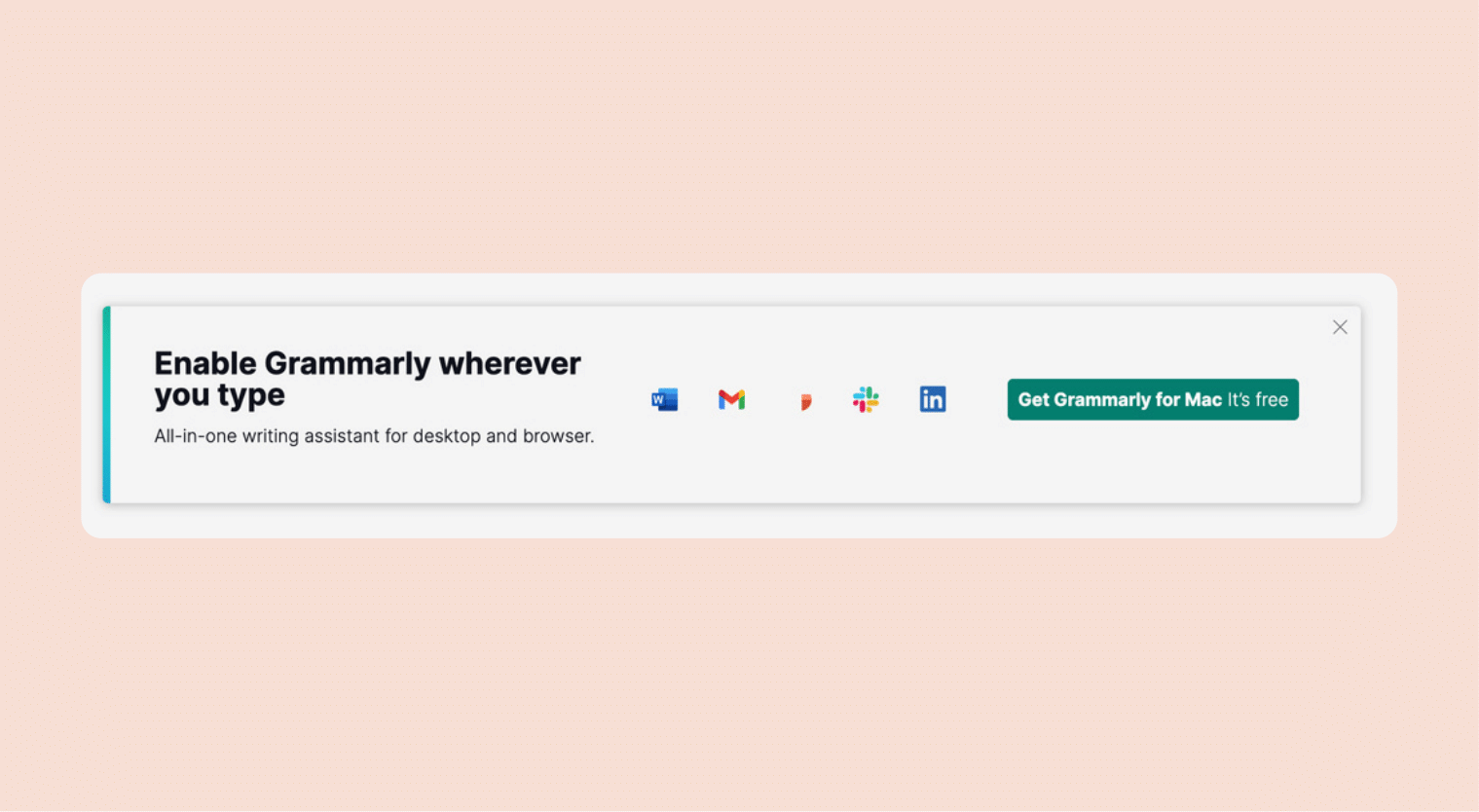
Source: Grammarly
Interstitial Ads vs. Banner Ads
While both interstitial ads and banner ads serve distinct purposes in mobile advertising, understanding their strengths and limitations can help you choose the right ad type based on campaign goals, user experience considerations, and overall engagement strategy.
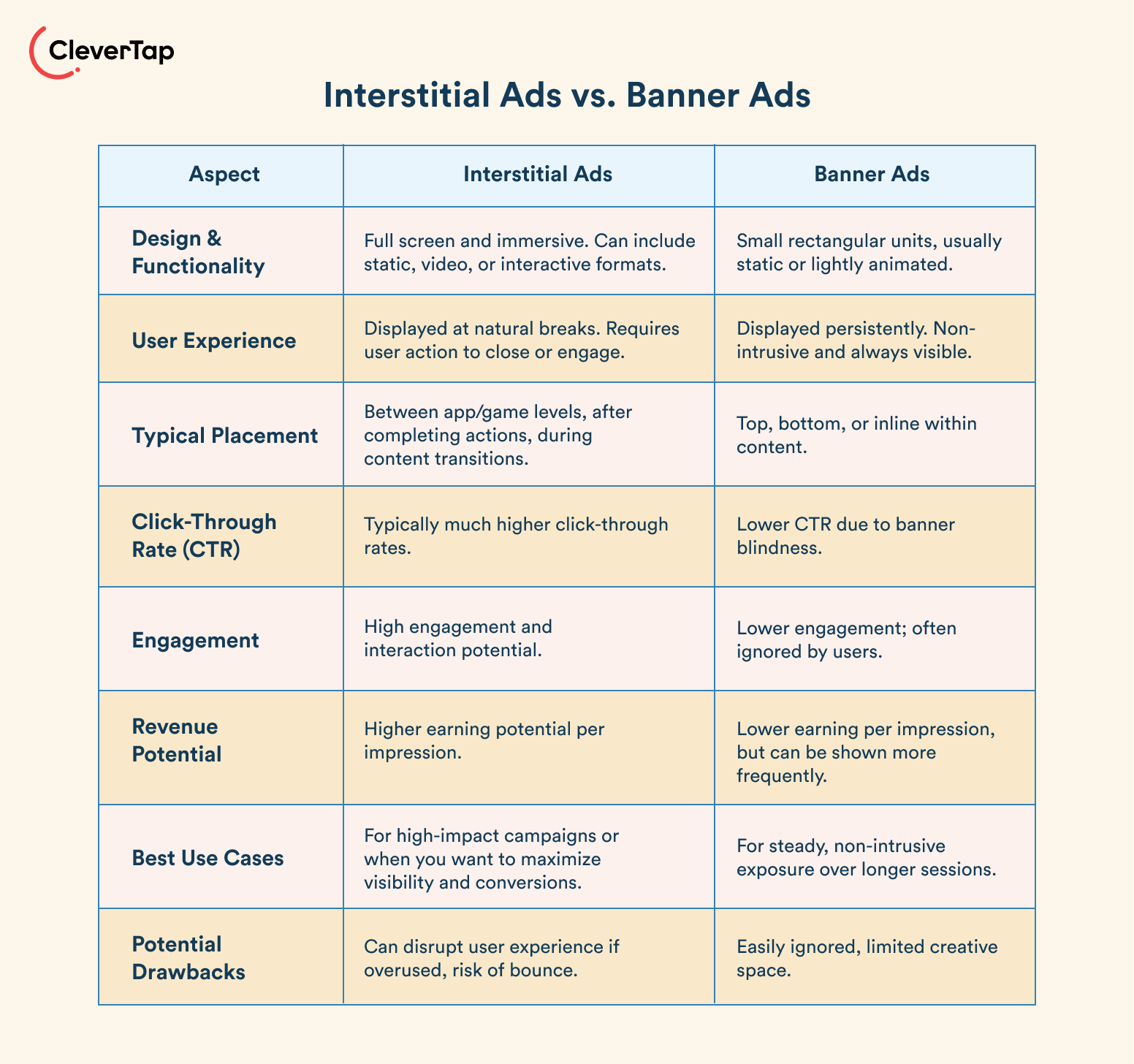
Types of Interstitial Ads
Interstitial ads come in various formats, each tailored to different marketing goals and user experiences. Below, we break down the most common types used across apps, websites, and games:
1. Static Interstitial Ads
Static interstitial ads are full-screen advertisements featuring a single image or graphic with minimal animation. These ads are ideal for straightforward promotions, such as product launches or seasonal sales, where clarity and simplicity are key.

They load quickly and are easy to implement, making them a go-to choice for marketers prioritizing quick deployment. However, their lack of interactivity means they rely heavily on strong visuals and concise messaging to drive action.
2. Interstitial Video Ads
Interstitial video ads are short, full-screen videos that play during natural breaks in content, such as between game levels or after a user finishes reading an article. These ads often include a “skip” button after a few seconds, balancing user control with brand exposure.

Video interstitials excel at storytelling, product demos, or showcasing app functionalities, and they typically achieve higher engagement rates than static ads. For instance, a streaming platform might use a video interstitial to preview a new show during a mobile app’s loading screen.
3. Playable Ads
Playable ads let users interact with a mini-version of a game or app before downloading it. Commonly used in mobile gaming, these ads allow potential users to experience gameplay mechanics firsthand, increasing the likelihood of installations.

For example, a puzzle game might offer a playable ad where users complete a quick level to unlock a reward. This format bridges the gap between advertising and user experience, driving higher conversion rates than passive ad types.
4. Gamified Interstitials
Gamified interstitials incorporate game-like elements-such as challenges, rewards, or trivia questions-to turn ad viewing into an interactive experience. These ads are effective for boosting engagement and collecting user data.

A fitness app, for instance, might use a gamified interstitial where users answer questions about workout preferences to earn a discount. By making ads fun and participatory, brands can reduce ad fatigue and foster positive associations with their products.
Here’s some further reading on app gamification. Learn how to gamify your app and boost engagement.
Benefits Of Using Interstitial Ads
Interstitial ads offer several advantages that make them a preferred choice for marketers and app publishers looking to maximize impact and revenue.
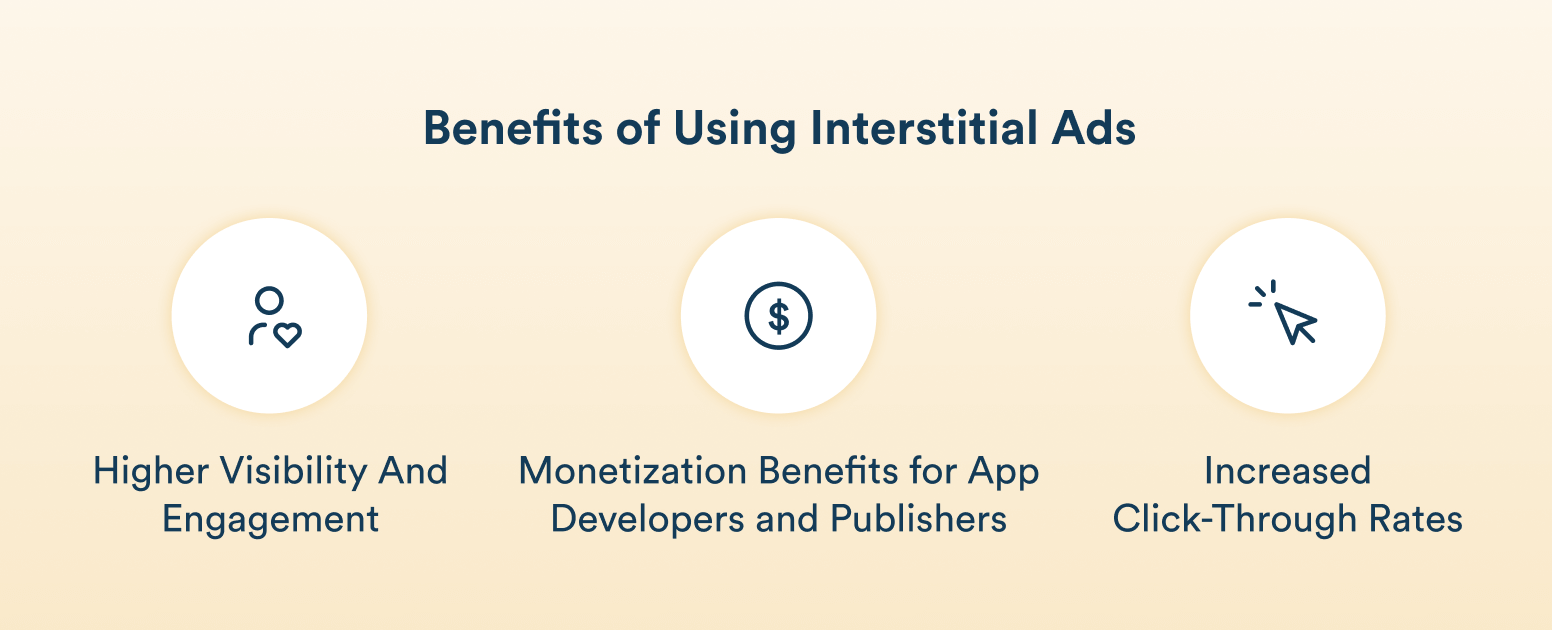
1. Higher Visibility And Engagement
Since interstitial ads fill the entire screen, users can’t simply scroll past or ignore them like they might with smaller ad formats. This prominent placement leads to stronger engagement.
A study by PropellerAds found that interstitial ads on Android devices can achieve click-through rates as high as 4-5%, a level of engagement that’s difficult to match with traditional banners or native ads.
2. Increased Click-Through Rates
Compared to banner ads, interstitials consistently deliver higher click-through rates. Industry benchmarks show that while banner ads often see CTRs below 0.1%, interstitial ads have a higher CTR, depending on placement and creative quality.
This means users are far more likely to interact with an interstitial ad, making it a smart option for campaigns focused on driving traffic or increasing conversions.
Here are 25 effective strategies to boost app conversion rate.
3. Monetization Benefits for App Developers and Publishers
Interstitial advertising can be a strong revenue driver for app developers and publishers. Because these ads are more noticeable and interactive, they tend to command higher eCPMs (effective cost per thousand impressions) than other formats.
Reports from ad networks, such as Business for Apps indicate that interstitial ads can earn several times more per impression than banners, making them a valuable part of any app monetization strategy, especially for apps with natural transition points where these ads fit seamlessly.
Challenges And Considerations With Interstitial Ads
Interstitial ads can be powerful, but they aren’t without their drawbacks. Marketers and publishers need to be aware of several important considerations to ensure these ads remain effective and user-friendly.
1. Intrusiveness And User Experience
Because interstitial ads take over the full screen, they can easily interrupt what a user is doing. If they pop up at the wrong moment, such as during a game or while filling out a form, they can quickly become a source of frustration. The key is to display these ads only at natural pauses or transitions, so they feel less like an interruption and more like a part of the experience.
2. Ad Fatigue And Bounce Rates
Showing the same interstitial ad too often can lead to ad fatigue, where users start to ignore or even resent the ads. This overexposure can also drive up bounce rates, as some users may choose to leave the app or site altogether rather than deal with repeated interruptions. Rotating creative and limiting how often users see an interstitial advert helps keep engagement high and frustration low.
3. Compliance With Google Play And App Store Policies
Both Google Play and Apple’s App Store have specific guidelines for interstitial ads. Ads that are too aggressive, difficult to close, or that appear at inappropriate times can lead to penalties or even removal from the app stores. For example, Google has made it clear that interstitial ads shouldn’t pop up unexpectedly or block essential content, especially on mobile devices.
4. Compliance With Ad Policies
Ad networks also set their own rules around interstitial ad formats, timing, and user controls. Not following these can result in ads being blocked, accounts being suspended, or revenue being withheld. Staying current with the latest ad network requirements is essential for uninterrupted monetization.
5. Frequency Capping
To avoid overwhelming users, it’s best practice to limit how often interstitial ads appear. Many successful apps set a cap, such as one interstitial ad per user per hour, or even less frequently. This approach helps maintain a balance between monetization and user satisfaction, ensuring that ads remain effective without becoming a nuisance.
Read our full guide on mobile advertising.
Interstitial Ads Best Practices
To get the best results from interstitial ads without annoying your users, keep these five best practices in mind:
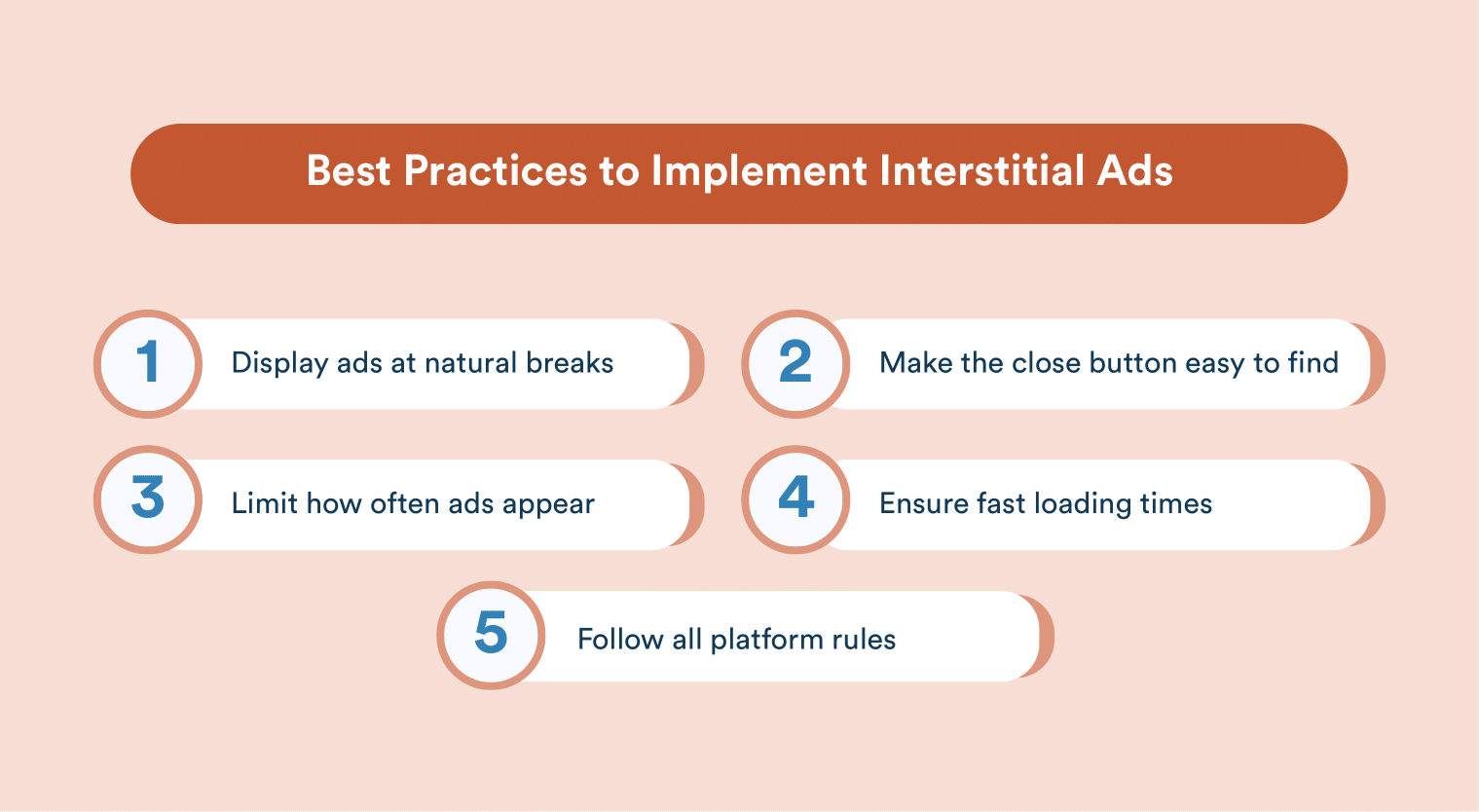
1. Display Ads At Natural Breaks
Timing matters a lot. Show interstitial ads only during natural pauses in the user’s journey, like between game levels, after completing a task, or when moving from one page to another. Avoid interrupting users in the middle of important actions, as this can lead to frustration and higher drop-off rates.
2. Make The Close Button Easy to Find
Always include a clear and accessible close or skip button. Users should be able to quickly exit the ad if they choose. This helps reduce annoyance and accidental clicks, especially on smaller mobile screens, and smooths the overall experience.
3. Limit How Often Ads Appear
Don’t overwhelm users with too many interstitial ads. Set limits on how frequently the same user sees them, commonly one ad per hour or even less often. This prevents ad fatigue and keeps users more receptive to your messages over time.
4. Ensure Fast Loading Times
Slow-loading ads can frustrate users and cause them to abandon your app or website. Optimize your interstitial ads to load quickly and smoothly, especially if they include videos or interactive elements. A seamless experience encourages better engagement.
5. Follow All Platform Rules
Stick to the guidelines set by app stores and ad networks. Avoid placing ads that block important content or appear unexpectedly. Keeping up with policy changes helps you avoid penalties, ensures your ads get served properly, and protects your app’s reputation.
Real-World Interstitial Ads Examples
Interstitial ads are a staple in the digital advertising world, and many well-known brands use them to grab attention and drive results. Here are three real-world examples that show how versatile and effective these ads can be:
1. How Candy Crush Saga Displays Interstitial Ads
In the popular mobile game Candy Crush Saga, players often see a full-screen ad after finishing a level or when they run out of lives.

Source: Mobile Dev Memo
These interstitial ads can promote other games, in-app purchases, or even external brands. Because the ad appears during a natural pause in gameplay, it feels less intrusive and is more likely to get noticed.
2. How YouTube Uses Interstitial Video Ads

Source: Youtube
On YouTube’s mobile app, users often encounter short, full-screen video ads before their selected video begins. These video interstitials are used by brands to showcase new products, movie trailers, or special promotions. Since viewers are waiting for content to start, these ads are almost impossible to ignore and often achieve high view rates.
3. How The New York Times Uses Interstitial Ads

Source: The New York Times
The New York Times employs interstitial ads within its digital platforms to encourage readers to subscribe to premium content. Before accessing certain articles, users see full-screen ads promoting subscription offers. This approach helps the Times grow its subscriber base by targeting engaged readers at moments when they are most likely to convert, balancing revenue generation with user value.
4. How a Leading Indian Bank Used In-App Interstitials to Boost Traffic
A major Indian bank partnered with CleverTap to enhance its customer engagement strategy and saw impressive results. They collaborated with CleverTap to implement a recommendation model that delivers personalized suggestions through in-app interstitials and footer notifications. For instance, if a user repeatedly visits the fixed deposit page without initiating one, the model triggers a fixed deposit recommendation.
This model also powers product promotions, enabling the team to showcase 5 to 6 different products to each user every month. Each product is featured for a 5-day period, during which users receive a new interstitial notification daily.
As a result, the campaign successfully promotes a total of 22 products to over 7 million users. Before partnering with CleverTap, their in-app campaigns contributed 1% of the total app and website traffic. Now, the campaigns they’ve created generate 25% of traffic.
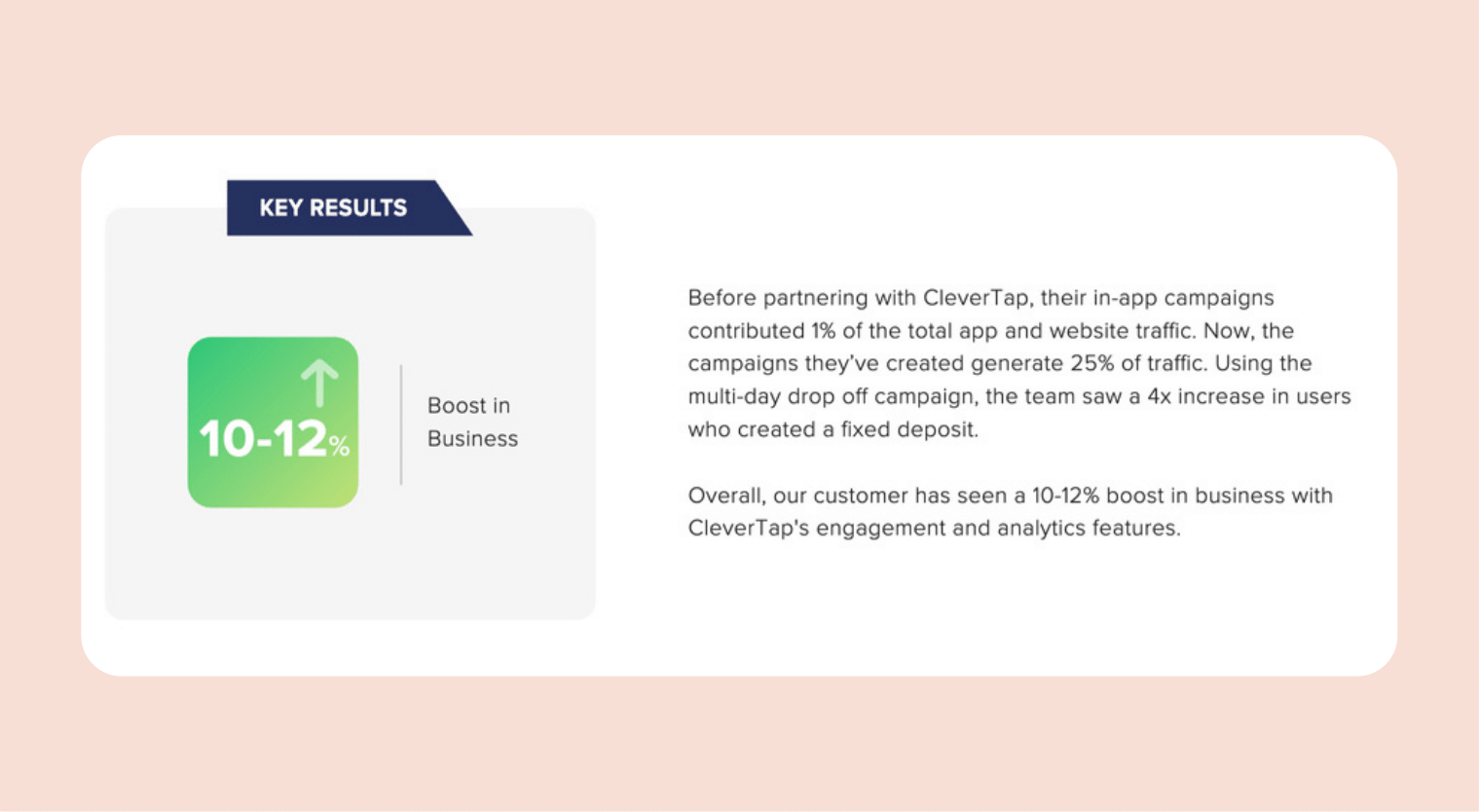
This case demonstrates how well-placed interstitial in-app campaigns, powered by real-time analytics, can seamlessly fit into the user experience and drive meaningful business growth without feeling disruptive.
Read the full case study here.
Measuring the Success Of Interstitial Ads
Running interstitial ads is only worthwhile if you can measure their impact and understand what’s working. To get a clear picture of your ad performance, it’s important to focus on the right mobile app metrics and use tools that can provide meaningful insights. Let’s look at the most important ways to track the effectiveness of your interstitial ad campaigns.
KPIs: What To Track And Why
When it comes to interstitial ads, certain performance indicators give you a reliable sense of how well your ads are doing:
- Click-Through Rate (CTR): This tells you how many people are clicking on your ad compared to how many times it’s shown. A strong CTR means your ad is catching attention and prompting action.
- Impressions: Impressions count how often your ad appears to users. While high impressions mean your ad is getting seen, it’s important to look at this number alongside engagement metrics to judge true effectiveness.
- Engagement Time: Engagement time measures how long users interact with your ad, whether they’re watching a video or exploring interactive content. More time spent usually points to higher interest and a more memorable message.
- Conversion Rate: Conversion rate tracks the percentage of users who take the next step, like signing up, making a purchase, or downloading an app. This is the clearest indicator of whether your ad is driving real business results.
Learn about 26 conversion rate metrics and KPIs to track.
Tools For Tracking Performance: CleverTap
CleverTap offers a comprehensive platform designed to track and improve interstitial ad campaigns with features such as:
- Real-Time Analytics: Monitor CTR, impressions, engagement, and conversions all in one dashboard, enabling quick performance reviews.
- Customer Segmentation: Analyze how different user groups respond to ads, allowing for targeted optimizations.
- Frequency Capping: Set limits on how often users see interstitial ads to avoid ad fatigue and maintain a positive user experience.
- A/B Testing: Easily test different ad creatives, placements, and timings to find the most effective combinations.
- In-App Behavior Tracking: Go beyond clicks by understanding what users do after interacting with ads, helping refine campaigns based on actual user journeys.
- Customizable In-App Notifications: CleverTap’s editor supports creating visually appealing interstitial ads with images, videos, and customizable text that fit various device screens perfectly.
By leveraging CleverTap’s tools, marketers and app developers can gain actionable insights, optimize ad delivery, and balance monetization with user satisfaction, all from a single platform.
Get a demo and understand how CleverTap can boost your mobile advertising efforts.
Ads That Drive Engagement And Revenue
To wrap up, interstitial ads remain one of the most effective ways to capture user attention and drive engagement across mobile apps and websites. Their full-screen format delivers higher visibility, better click-through rates, and strong monetization potential when used thoughtfully.
As advertising evolves, leveraging advanced tools like CleverTap can make all the difference, helping you design, deploy, and measure interstitial campaigns with precision and ease. CleverTap’s powerful analytics and flexible creative tools empower marketers to optimize ad performance while maintaining a seamless user experience. Explore CleverTap today to unlock smarter interstitial advertising and boost your app’s growth.
Subharun Mukherjee 
Heads Cross-Functional Marketing.Expert in SaaS Product Marketing, CX & GTM strategies.
Free Customer Engagement Guides
Join our newsletter for actionable tips and proven strategies to grow your business and engage your customers.















































